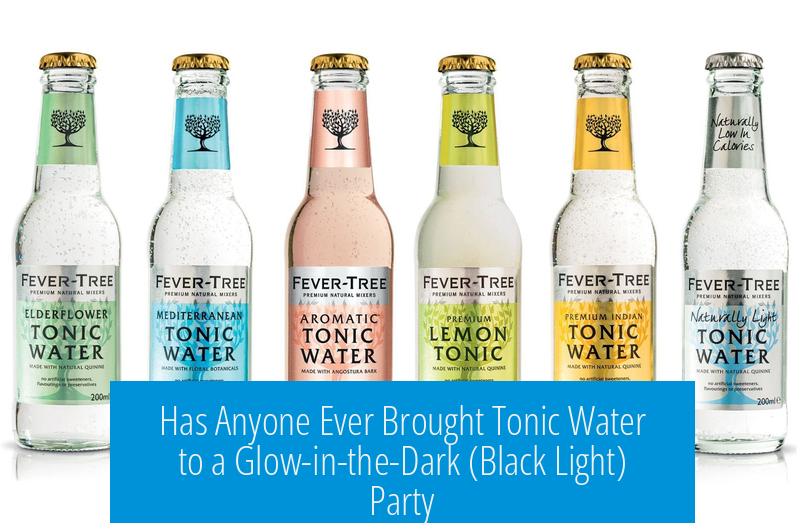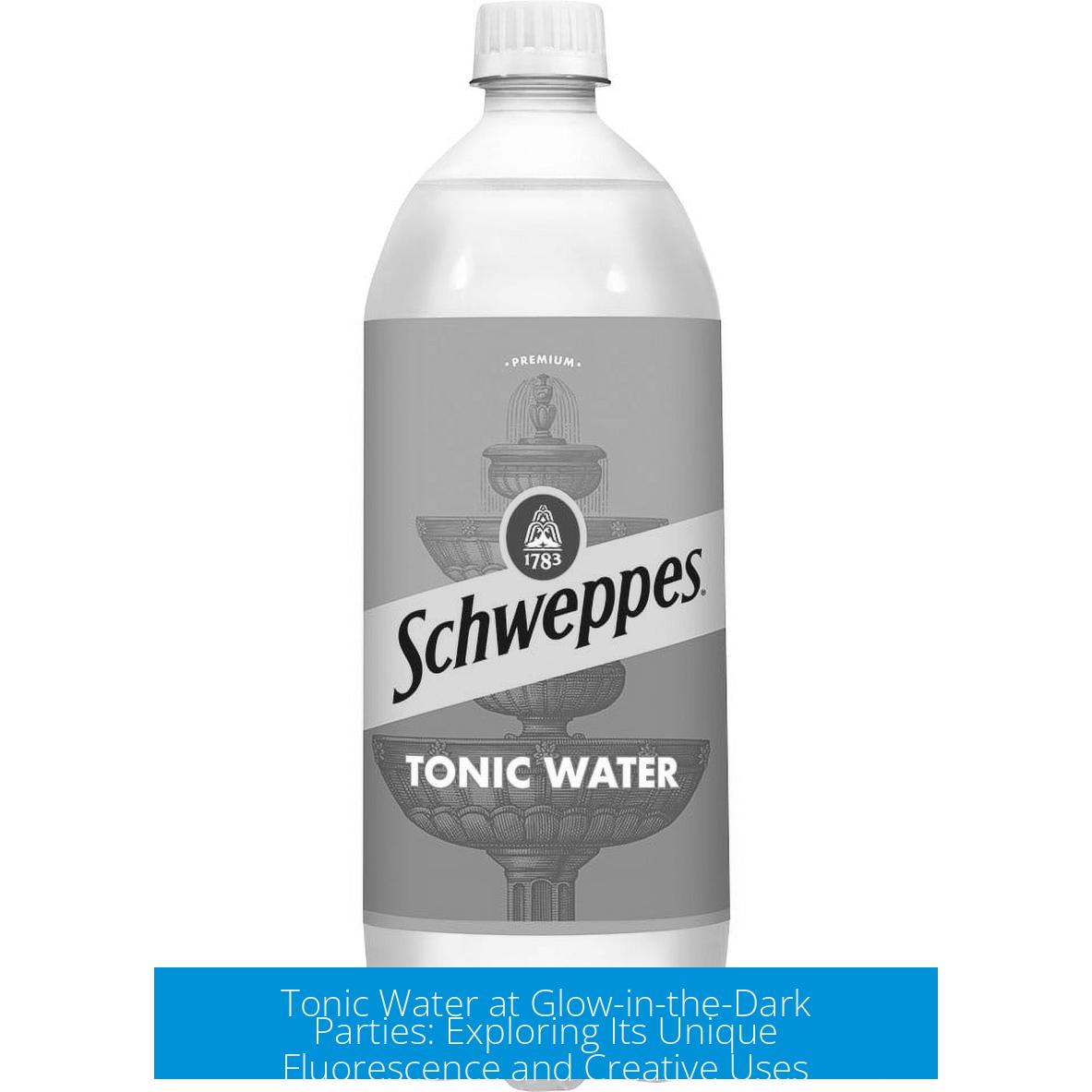Has Anyone Ever Brought Tonic Water to a Glow-in-the-Dark (Black Light) Party?

Yes, tonic water has been brought and used at glow-in-the-dark or black light parties, often as a novelty item due to its fluorescent properties under UV light. It offers a distinct glowing effect in drinks and decorations but tends to have limited long-term appeal in social settings.
Tonic Water at Black Light Parties: Firsthand Experience
Thus, tonic water can create immediate excitement but may not sustain it over the night. The effect invites curiosity, but its attraction is short-lived in casual party environments.
Why Does Tonic Water Glow Under Black Light?
The glowing effect occurs because tonic water contains quinine, a substance known for its fluorescence. Quinine absorbs ultraviolet (UV) light and re-emits it as visible blue light. This fluorescence makes tonic water glow vividly under black light, which emits UV rays.
This characteristic explains why tonic water-filled glasses or decorations stand out sharply in dark rooms under UV lighting. Anecdotal evidence from bars confirms that drinks mixed with tonic water glow vividly when placed beneath a black light source.
Glowing Drinks: Tonic Water Alone vs. Mixed with Alcohol
Interestingly, tonic water glows on its own but is generally more visually striking when mixed with certain alcoholic beverages, such as gin. The classic gin and tonic drink is well-known for its luminous appearance in black light environments.
People report that tonic water alone is less impressive, but when combined with gin, the glow becomes stronger and more appealing. This combination has become a favored choice for black light parties and bars that use UV lighting for ambiance.
Creative Uses Beyond Drinks: Tonic Water’s Glow in Party Props and Snacks
Tonic water’s glow is not limited to beverages. It finds creative applications in party props and edible items. Examples include:
- Halloween decorations: Miniature objects like skeletons immersed in tonic water jars create eerie glowing effects under black light.
- Glowing jello shots: Replacing water with tonic water and alcohol in gelatin recipes produces vibrant, glowing treats for themed parties. Using shaped molds enhances visual interest.
These inventive uses enhance the party atmosphere and extend tonic water’s utility beyond simple drinking enjoyment.
Historical Context: Origin of Tonic Water and Its Fluorescent Component
The unique qualities of tonic water stem from its quinine content, which has historical roots. British soldiers in colonial India often consumed quinine to prevent malaria. The bitter taste prompted them to mix quinine water with sugar and gin. This practice evolved into the beverage now called tonic water.
This origin story connects the glowing feature to quinine’s chemical properties and explains tonic water’s longstanding presence in social drinking culture.
Summary of Key Insights
- Tonic water is commonly brought to black light parties due to its fluorescent glow under UV light.
- Its glowing effect comes from quinine, which fluoresces when exposed to black light.
- Drinks mixing tonic water with alcohol like gin create stronger visual glow than tonic water alone.
- Creative uses include glowing Halloween props and illuminated jello shots made with tonic water.
- Tonic water’s quinine originated as a malaria preventive mixed with alcohol, establishing its cultural connection to cocktails.
- Despite initial novelty, tonic water’s glow effect may become less engaging over long social events.





Leave a Comment